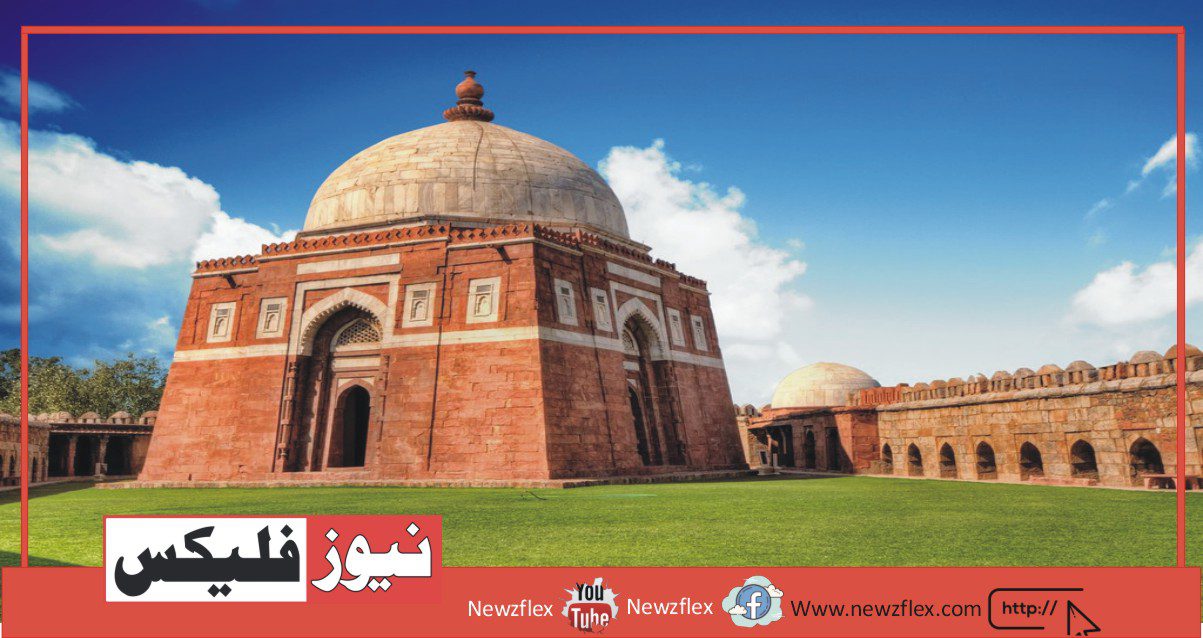

Ghiyasuddin Tughluq
Ghiyath-ud-din Tughlaq was the founding father of the Tughlaq Dynasty. His father Malik Tughlaq was a Turkish slave of Ghiyath-ud-din Balban and his mother was a Jat lady of Punjab. Their son distinguished himself in the service of the Sultans of Delhi, and for his brilliant and victorious campaigns against Mongols earned the title of Ghazi Malik.
He was appointed because of the Governor of Dipalpur by Ala-ud-din Khilji. The low-caste usurper Khusrau Khan had completely extinguished the family of Ala-ud-din Khilji, and the nobles called upon Ghazi Malik to ascend the throne. This he did under the title of Ghiyath-ud-din Tughlaq Shah, and have become the first ruler of the Tughlaq dynasty.
Ghiyath-ud-din was an experienced administrator. He proved a firm and wise ruler. He re-established the military might of the Delhi Sultanate and subdued the rebellious rulers. Not only the revolt of Bengal controlled, but the kingdoms of Warangal and Madura annexed and Ghiyath-ud-din also conquered Tirhut on the borders of Nepal and most a part of South Asia and annexed the territories of all those rulers who had been defeated by him and hence became the master of more extensive empire than that of Ala-ud-din Khilji.
About Ghiyath-ud-din as an administrator, a contemporary Historian says:
“The administration of Ghiyath-ud-din was based upon the principles of justice and moderation. The land revenue was organized and also the Sultan took great care to stop abuses. Cultivators were treated well and officials were severely punished for their misconduct. The departments of Justice and Police worked efficiently, and also the greatest security prevailed within the remotest parts of the empire.”
He attempted to boost the finances of the state and for this purpose, he established the system of taxes. Barani tells that the king believed that people should ‘be taxed in order that they’re not blinded with wealth so become discontented and rebellious; nor, on the other hand, be so reduced to poverty and destitution on being unable to pursue their daily bread.’ He improved the means of communication and the conditions of roads, bridges, and canals.
Giyath-ud-din faced twin-sided challenges both internal and external. The administration system was completely destroyed by the incapable successors of Ala-ud-din Khilji. The usurper Khusrau Khan emptied the state treasury completely by lavish expenditures on friends and nobles to get their support and granted expensive gifts to them. When Ghiyas-ud-din ascended the throne he felt the requirement to require those gifts back to reorganize the state treasury. This created a way of disliking and enmity between the Sultan and also the Sufi saint Nizam-ud-din Auliya. Hadrat Nizam-ud-din Auliya received five lakh tankas from Khusrau, but when he was asked to refund the cash, he replied that it had already been spent for the relief of the poor in his monastery. Ghiyath-ud-din failed to pursue the matter but it had been the start of an unpleasant relationship between the king and also the Sheikh.
Ghiyath-ud-din died in 1325 as a result of the falling of a pavilion hastily constructed by his son at Afghanpur (near Delhi) to receive him before his ceremonial entry into the capital on return from his successful campaign in Bengal. There are conflicting accounts on whether this was an accident or a conspiracy by his son to usurp power, so it remains a touch of a mystery. After his death, his son Muhammad bin Tughlaq proclaimed himself the Sultan.
غیاث الدین تغلق
غیاث الدین تغلق, تغلق خاندان کا بانی تھا۔ ان کے والد ملک تغلق غیاث الدین بلبن کے ترک غلام تھے اور والدہ پنجاب کی جاٹ خاتون تھیں۔ ان کے بیٹے نے دہلی کے سلطانوں کی خدمت میں اپنے آپ کو ممتاز کیا، اور منگولوں کے خلاف اپنی شاندار اور فاتحانہ مہمات کے باعث غازی ملک کا خطاب حاصل کیا۔ اسے علاؤالدین خلجی نے دیپالپور کا گورنر مقرر کیا تھا۔ نچلی ذات کے غاصب خسرو خان نے علاؤالدین خلجی کے خاندان کو مکمل طور پر ختم کر دیا تھا، اس لیے امرا نے غازی ملک کو تخت پر چڑھنے کے لیے بلایا۔ یہ اس نے غیاث الدین تغلق شاہ کے عنوان سے کیا، اور تغلق خاندان کا پہلا حکمران بنا۔
غیاث الدین ایک تجربہ کار منتظم تھے۔ وہ ایک مضبوط اور عقلمند حکمران ثابت ہوا۔ اس نے دہلی سلطنت کی فوجی طاقت کو دوبارہ قائم کیا اور باغی حکمرانوں کو زیر کیا۔ نہ صرف بنگال کی بغاوت سے نمٹا گیا بلکہ ورنگل اور مدورا کی سلطنتوں نے بھی الحاق کر لیا اور غیاث الدین نے نیپال کی سرحدوں اور جنوبی ایشیا کے بیشتر حصوں پر واقع ترہوت کو بھی فتح کر لیا اور ان تمام حکمرانوں کے علاقوں کو بھی اپنے ساتھ ملا لیا جنہوں نے اس کے ہاتھوں شکست کھائی تھی۔ اس لیے علاؤالدین خلجی سے زیادہ وسیع سلطنت کا مالک بن گیا۔
غیاث الدین کے بطور منتظم کے بارے میں ایک جدید مورخ کہتا ہے
غیاث الدین کا نظم و نسق انصاف اور اعتدال کے اصولوں پر مبنی تھا۔ زمینی محصول کو منظم کیا گیا اور سلطان نے زیادتیوں کو روکنے کا بہت خیال رکھا۔ کاشتکاروں کے ساتھ اچھا سلوک کیا گیا اور اہلکاروں کو ان کی بدتمیزی کی سخت سزا دی گئی۔ انصاف اور پولیس کے محکموں نے مؤثر طریقے سے کام کیا، اور سلطنت کے دور دراز حصوں میں سب سے بڑی حفاظت غالب رہی۔
اس نے ریاست کے مالیات کو بہتر بنانے کی کوشش کی اور اس مقصد کے لیے اس نے ٹیکس کا نظام قائم کیا۔ بارانی بتاتا ہے کہ بادشاہ کا خیال تھا کہ لوگوں پر ٹیکس لگانا چاہیے تاکہ وہ دولت سے اندھے نہ ہو جائیں اور ناخوش اور باغی ہو جائیں۔ اور نہ ہی دوسری طرف غربت اور کسمپرسی کی طرف اتنا گرا دیا جائے کہ وہ اپنی روزی روٹی کے حصول کے قابل نہ رہیں۔‘‘ اس نے مواصلات کے ذرائع اور سڑکوں، پلوں اور نہروں کی حالت بہتر کی۔
غیاث الدین کو اندرونی اور بیرونی دو طرفہ چیلنجز کا سامنا تھا۔ علاؤالدین خلجی کے نااہل جانشینوں نے انتظامی نظام کو مکمل طور پر تباہ کر دیا تھا۔ غاصب خسرو خان نے دوستوں اور رئیسوں کی حمایت حاصل کرنے کے لیے ان پر بے دریغ خرچ کر کے سرکاری خزانے کو مکمل طور پر خالی کر دیا تھا اور انھیں مہنگے تحائف سے نوازا تھا۔ جب غیاث الدین تخت پر بیٹھا تو اس نے ان تحائف کو واپس لینے کی ضرورت محسوس کی تاکہ ریاستی خزانے کو دوبارہ منظم کیا جا سکے۔ اس سے سلطان اور صوفی بزرگ نظام الدین اولیاء کے درمیان ناپسندیدگی اور دشمنی کا احساس پیدا ہوا۔ حضرت نظام الدین اولیاء نے خسرو سے پانچ لاکھ ٹنک وصول کیے لیکن جب ان سے رقم واپس کرنے کو کہا گیا تو انھوں نے جواب دیا کہ یہ ان کی خانقاہ میں غریبوں کی امداد کے لیے خرچ ہو چکے ہیں۔ غیاث الدین نے اس معاملے کی پیروی نہیں کی لیکن یہ بادشاہ اور شیخ کے درمیان ناخوشگوار تعلقات کا آغاز تھا۔
غیاث الدین 1325 میں بنگال میں اپنی کامیاب مہم سے واپسی پر دارالحکومت میں ان کے رسمی داخلے سے قبل افغان پور (قریب دہلی) میں اس کے بیٹے کی طرف سے عجلت میں تعمیر کیا گیا منڈپ گرنے کے نتیجے میں انتقال کر گیا۔ اس بارے میں متضاد بیانات ہیں کہ آیا یہ حادثہ تھا یا اس کے بیٹے کی طرف سے اقتدار پر قبضہ کرنے کی سازش تھی، اس لیے یہ ایک معمہ بنی ہوئی ہے۔ اس کی موت کے بعد اس کے بیٹے محمد بن تغلق نے خود کو سلطان قرار دیا۔








